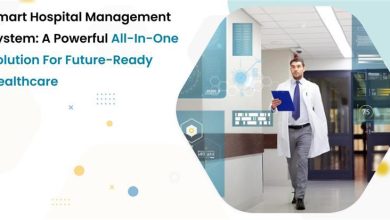
AI’s potential in healthcare is vast and exceeds human capabilities. It can detect patterns and correlations that go unnoticed by the human eye and is eons ahead in its learning capabilities, allowing it to progress in real time. Its ability to take in large volumes of medical data generated daily, makes it an essential component in getting ahead of what’s to come as we look to the future in addition to improving our current day circumstance.
AI provides the opportunity to establish a new baseline in healthcare, one that is more affordable and more effective. However, its application is only meaningful if those who truly need it have access to its benefits and if it is used in a way that creates real impact.
Improvements in one area, in particular, could be a game-changer: disease detection and diagnosis. Yet, data reveals a rather stifling reality.
Diagnostics deserve more investment
Data reveals that 47% of the world today does not have access to even the most basic diagnostic tools, and while through necessity that was brought on by the pandemic, there has been a surge in diagnostic innovation, yet diagnostics still only account for 2% of all healthcare spending. Early diagnosis is often the key to successful treatment and so the question here is why.
Detection and diagnosis are frontline activities that go hand in hand, increasing survival rates, reducing deaths, eliminating wasteful healthcare spending, curbing antibiotic overprescription, and ultimately ensuring patients receive the care they need.
Take breast cancer, for example. When detected during stage one, the five-year survival rate exceeds 90%. Additionally when AI is used to diagnose and detect breast cancer, according to an article in Wired, it has a 99% accuracy rate and is 30 times faster in reviewing and translating mammograms, enabling much earlier detection of breast cancer than humans are capable of.
For infectious diseases such as invasive Strep A, which requires immediate treatment, AI tools can help physicians distinguish between a sore throat and strep throat, providing them with clarity on how to proceed — in as little as 60 seconds. Strep A must be treated before it enters the bloodstream to prevent fatal consequences. Out of 1.8 million cases annually and rising, 500,000 cases annually result in death, often due to a lack of early diagnosis and treatment.
Even the best healthcare models are failing
When we think about lapses in healthcare we typically think of low to middle income countries but we’re also seeing lapses in what are considered to be high quality healthcare systems, indicating the need for a global healthcare system makeover.
For example, Canada’s healthcare system has seen over 74,000 patients since 2018 die while on a waitlist, before ever receiving a diagnostic scan or surgery. It is believed the true number is nearly double as not all provinces and authorities collect this information.
Additionally, the OECD estimates that 20% of global healthcare spending is wasted, equating to approximately $1,100 to $1,700 per person per year. The United States ranks first in healthcare waste. What’s most concerning is that this waste stems from preventable and rectifiable system inefficiencies, including care delivery failures, over-treatment, and improper care delivery.
A global healthcare system makeover is a tall task but this is where AI can come in to help minimize inefficiencies, streamline efforts, ensure cost efficiencies and play a role in future pandemic preparedness and national health planning.
The need for AI to address our current healthcare challenges is clear, but an even greater imperative for change lies ahead, the future.
The future of health requires AI
Over the last two decades, the global population has grown at a considerable rate but by 2050 we will experience the largest surge yet. The United Nations anticipates that the global population will rise from 8 billion today to 9.7 billion, even despite declining fertility rates.
Population growth is the precursor to infectious disease spread, brought on by international travel, cross-border migration, population density in urban settings, and resource expansion. These activities have contributed to human life while simultaneously driven an increase in the spread of infectious diseases throughout history.
This can only mean that as we look ahead, new diseases will be ushered in and likely spread faster than they do today.
AI-enabled disease detection tools can help the healthcare system rise to the task of effectively caring for a larger future population, helping to mitigate risk, enabling earlier intervention, forecasting predictions, and ultimately leading to a healthier and safer world.



